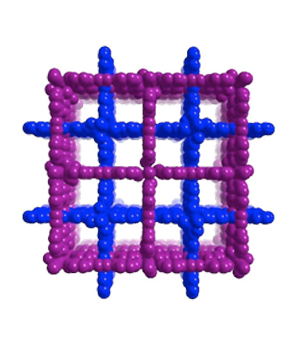Using AI to control energy for indoor agriculture
30 September 2024
Published online 25 May 2016
Scientists develop a superior material for separating acetylene gas from ethylene.

© Michael Zaworotko / University of Limerick
Various plastics and important industrial chemicals are polymers of ethylene and ethylene derivatives. To make ethylene at the quality needed for polymerization, it is important to first separate it from a mixture of ethylene (C2H4) and acetylene (C2H2). To do that, materials that can bind acetylene but not ethylene selectively and with a high capacity are needed.
So far, the best materials developed for this purpose were a family of porous metal–organic hybrids known as metal organic frameworks (MOFs), which performed well, but improvement had since stagnated.
The model of using MOFs as materials for gas separations and storage is based on the fine control over pore size and surface chemistry they offer, which can be tailored from first principles to exactly complement the gas atoms to be selected.
Now, researchers identified two new MOFs with copper atom–hexafluorosilicate centers that supersede existing benchmarks, publishing their results in Science1.
“We are not dealing with incremental but large jumps in performance,” says Michael Zaworotko, who co-led the study.
The two MOFs are held in place by two different organic linkers. One material shows a very high affinity to acetylene at low acetylene partial pressure, and the second a very high capacity, making them ideal for removal of minor acetylene contaminations and mass separations, respectively.
The researchers attribute this remarkable improvement to the geometric disposition of hexafluorosilicates, which favours acetylene binding.
“This type of material is understudied and quite different from previous families because of the use of both inorganic and organic linkers to build the structure,” says Zaworotko. “This creates the right mix of pore chemistry, pore geometry and pore size to exhibit highly selective trapping of small gas molecules and suggests that there are many other potential applications in purification.”
doi:10.1038/nmiddleeast.2016.79
Stay connected: